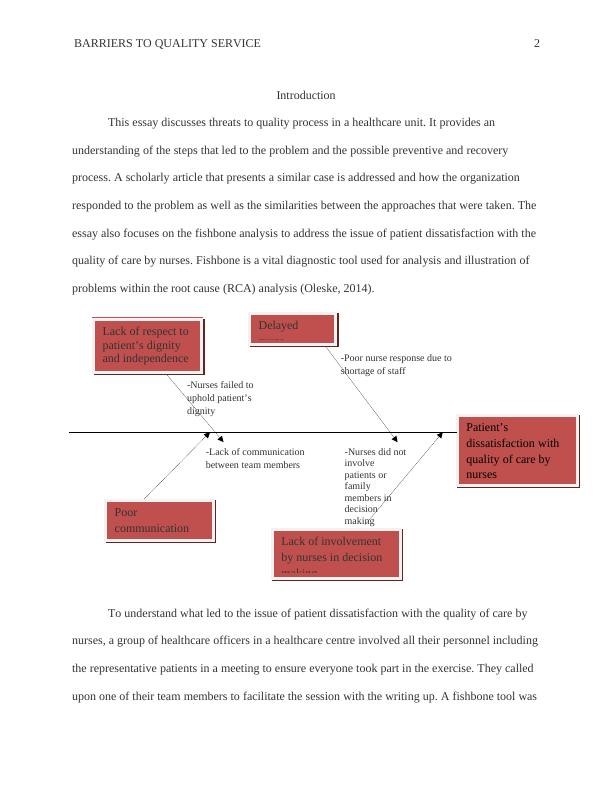Barriers To Healthcare Services
7 Pages1892 Words127 Views
Algonquin College
The Healthcare Sector (NSG3111)
Added on 2020-03-02
About This Document
Threats to the quality process in a healthcare unit are discussed in this document. It explains the events that lead to the condition as well as recommended preventive and rehabilitation measures. The fishbone analysis is also used in the article to address the topic of patient discontent with nurse care quality.
Barriers To Healthcare Services
Algonquin College
The Healthcare Sector (NSG3111)
Added on 2020-03-02
ShareRelated Documents
End of preview
Want to access all the pages? Upload your documents or become a member.
Root Cause Analysis and Process Improvement Plan in Healthcare
|11
|2149
|448
(Solved) RCA and FMEA - Assignment
|16
|4492
|123
Quality Improvement In Healthcare Setting
|7
|1947
|112
RCA and FMEA: Improving Patient Outcomes and Quality Care
|14
|2523
|408
Clinical Governance in Nursing
|18
|4703
|267
Organizational Systems and Quality Leadership
|9
|2089
|226



